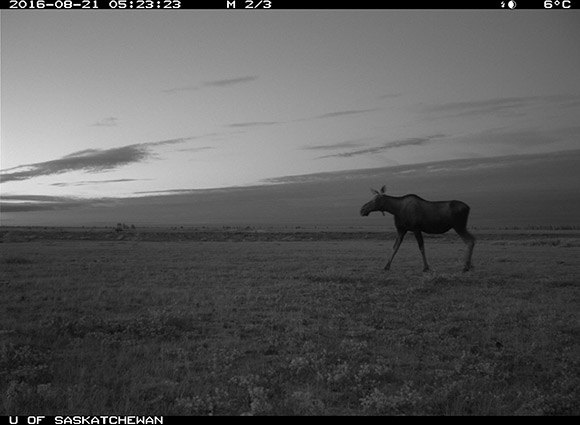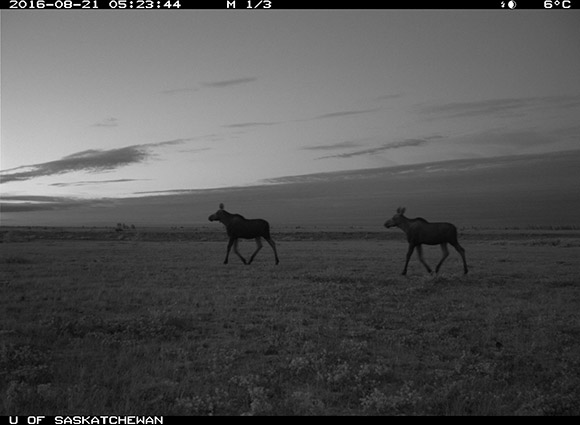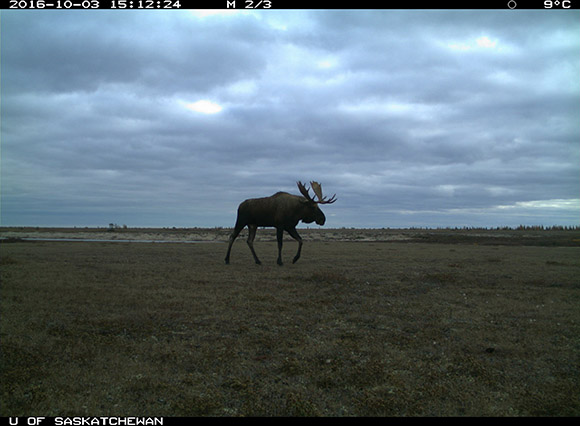Moose
Wapusk National Park
Moose (Alces alces) are the largest ungulates on the tundra. Moose are unmistakable, weighing roughly 1000 pounds with a shoulder height of 5 to 6.5 feet, they are significantly larger than other ungulates, such as caribou, found in the same ecosystem. Male moose, called bulls, are recognizable by their broad, flat antlers. Moose populations as a whole are declining within Manitoba, especially those further south. In Wapusk National Park, moose are regularly captured on remote cameras, but much less likely to encounter humans.
Moose are solitary creatures, and with the exception of cows and their calves, they’re most often seen alone. Despite their size, they consume an entirely vegetarian diet, consisting of both aquatic and terrestrial vegetation. Generally, moose are sedentary and slow moving but they can become extremely aggressive when provoked or threatened. Known predators of the moose include human hunters, gray wolves, and black and grizzly bears.
Male moose are polygamous and will mate with several females each fall if they have the opportunity. In September and October, males and female make loud mating calls to lure each other. Males fight for dominance and access to females, during which those big antler come in handy! After an eight month gestation period, cows give birth in May or June. Typically, only one calf is born but when food is plentiful, cows give birth to twins!
Check out the moose of Wapusk National Park!
Moose (Alces alces) are the largest ungulates on the tundra. Moose are unmistakable, weighing roughly 1000 pounds with a shoulder height of 5 to 6.5 feet, they are significantly larger than other ungulates, such as caribou, found in the same ecosystem. Male moose, called bulls, are recognizable by their broad, flat antlers. Moose populations as a whole are declining within Manitoba, especially those further south. In Wapusk National Park, moose are regularly captured on remote cameras, but much less likely to encounter humans.
Moose are solitary creatures, and with the exception of cows and their calves, they’re most often seen alone. Despite their size, they consume an entirely vegetarian diet, consisting of both aquatic and terrestrial vegetation. Generally, moose are sedentary and slow moving but they can become extremely aggressive when provoked or threatened. Known predators of the moose include human hunters, gray wolves, and black and grizzly bears.
Male moose are polygamous and will mate with several females each fall if they have the opportunity. In September and October, males and female make loud mating calls to lure each other. Males fight for dominance and access to females, during which those big antler come in handy! After an eight month gestation period, cows give birth in May or June. Typically, only one calf is born but when food is plentiful, cows give birth to twins!
Check out the moose of Wapusk National Park!
- Date modified :


